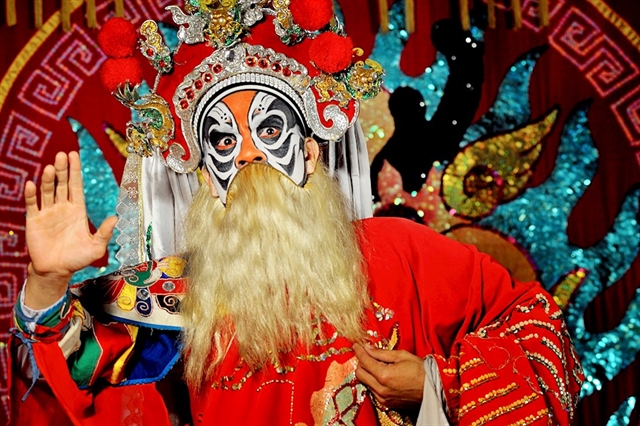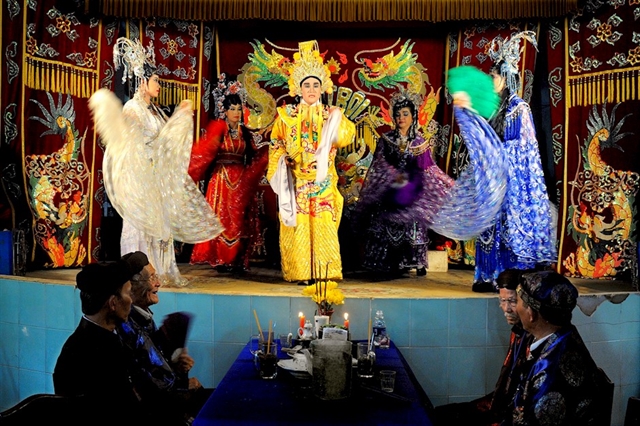[ad_1]

HÀ NỘI — Information about the characters in Vietnamese hát bội (classical drama) is now available in English on ichLinks, an online platform providing information about intangible cultural heritages in the Asia-Pacific region.
The project, entitled “Types of Characters in Vietnamese hát bội: A Quick Guide”, has been jointly conducted by Cultura Fish Group and the International Information and Networking Centre for Intangible Cultural Heritage in the Asia-Pacific Region under the auspices of UNESCO (ICHCAP).
Founded in 2020, Cultura Fish is a project with the core mission to inspire and promote the beauty of Vietnamese traditional practices for the youth.
Fifteen typical hát bội characters are selected to be featured on the platform, along with illustrations and videos that explain their face makeup and performance techniques, like kép, lão or đào motifs.
The characters are performed by many famed artists of the art form like Hữu Danh, Linh Phước, Linh Hiền, together with many others from the Hồ Chí Minh City Hát Bội Theatre.
The introduction of hát bội on the prestigious international platform is good news to enthusiasts of the Vietnamese traditional performing art. According to artist Đinh Bằng Phi, it would help promote and connect the traditional culture with tourism.
“Most importantly, young Vietnamese at home and abroad are provided with an additional information channel to learn about the national art genre of hát bội. Particularly, it makes Vietnamese traditional art forms, including hát bội, approachable to people around the world,” he told Người Lao Động (Labourer) newspaper.
Artist Ngọc Khanh said that the diverse measures to approach traditional arts, especially promotional projects on digital platforms, have brought hát bội closer to young audiences.
After the success of projects that aim to promote folk art like Vang Vọng Trống Chầu (Echoing Ritual Drum) or Đường Đến Hát Bội (Road to Hát Bội), she also reckoned “Types of Characters in Vietnamese hát bội: A Quick Guide” would become an additional useful means to promote values among foreigners
“The English introduction will increase the interactions, enabling netizens around the globe to easily access and learn about Việt Nam’s traditional culture and art in general, and hát bội in particular, in the context of modern technology.
“In the complicated condition of the pandemic, such practical projects on digital platforms are urgently needed to help improve understanding about art,” Khanh said.
A quick guide on types of characters in Vietnamese hát bội is archived at https://www.ichlinks.com/exhibition/hat-boi/.

A hát bội performance. The theatre consists of singing and dancing to music. Its themes include monarchist loyalty and patriotic duty. Photo hcmcpv.org.vn
Hát bội developed from folk art to a royal art in central and southern regions. It became particularly popular in central and southern provinces in the 1900s.
The theatre consists of singing and dancing to music. Its themes include monarchist loyalty and patriotic duty.
Hát bội plays feature old words, and the characters are often made up in black and red on their faces. VNS
[ad_2]
Source link
